In this guide
Unlock what works: how to test your creative to connect, convert, and inspire
Unlock what works: how to test your creative to connect, convert, and inspire

Ready to take the guesswork out of your creative?
Creative testing helps teams make smarter, data-driven decisions about their visual assets—before they go live. Instead of relying on opinions or gut instincts, creative testing ensures your designs, images, videos, advertisements, and even brand elements genuinely connect with your audience.
So, what can you test? Pretty much anything! Ad concepts, videos, commercials, brand imagery, logo variations, landing page layouts, influencer partnerships, and even the emotions your visuals evoke. Whether you're fine-tuning a single element or comparing entirely different creative directions, testing gives you the insights to craft visuals that resonate, drive engagement, and make an impact.
In this guide, we’ll walk through how to effectively test and optimize your creative assets, helping you avoid costly mistakes and maximize results. Let’s dive in!
Why creative testing matters
In a world where audiences are bombarded with content, creative testing ensures your message doesn’t just blend into the noise. By validating ideas and designs with real people before launch, teams can make data-driven decisions that optimize performance, resonate with target audiences, and reduce costly mistakes. Creative testing empowers teams to stay relevant, adapt to changing preferences, and drive innovation, all while maximizing the return on investments.
The value of getting this right
- Optimize performance: Focus on creative variations that drive the best results
- Understand audience preferences: Ensure your message aligns with what your audience values
- Minimize risk: Avoid launching ineffective or off-brand campaigns
- Validate concepts: Test ideas before investing in full production
- Improve decision-making: Use data to align teams and remove guesswork
- Adapt to market trends: Stay ahead of evolving audience needs and preferences
- Drive innovation: Experiment confidently to uncover bold, differentiating ideas
Common challenges teams face
Creative testing is a powerful way to ensure campaigns and designs resonate with audiences, but it’s not without challenges. Teams often struggle with time constraints and resource limitations. Without addressing these hurdles, the testing process can become inefficient, misaligned, or fail to deliver actionable insights.
Key challenges to creative testing
- Limited time and resources: Tight deadlines and budgets can make comprehensive testing difficult. Teams often struggle to get fast yet reliable feedback.
- Finding the right audience: Reaching niche or diverse segments can be challenging.
- Getting the right type of feedback: Teams relying on surveys or A/B testing miss richer insights, such as customer emotions, motivations, and context.
- Interpreting results effectively: Extracting actionable insights from data can be complex.
- Stakeholder alignment: Conflicting priorities can delay decisions or hinder implementation.
What happens without this approach?
When teams don’t invest in creative testing, they often rely on less effective alternatives that lack the depth and precision needed for informed decision-making. Instead of gathering real user feedback, they turn to internal opinions, historical data, or basic post-launch analytics. While these methods may seem faster or simpler, they often lead to missed opportunities, biased decisions, and ineffective campaigns that fail to resonate with the audience.
What teams might do instead of creative testing:
- Relying on internal opinions: decisions are based on team or leadership input, which can introduce bias
- Launching without testing: creatives are released without validation, risking poor engagement or backlash
- Trusting gut instincts: intuition-driven decisions may miss critical audience preferences
- Using basic surveys: feedback is limited to surface-level insights, lacking emotional or behavioral depth
- Depending on historical performance: assumes past success guarantees future results, ignoring evolving trends
- Conducting focus groups: feedback is limited in scale and diversity, and is often expensive
- Relying on post-launch analytics: issues are identified too late, leading to wasted resources
- Overusing A/B testing alone: quantitative results don’t provide the why behind user preferences
The impact of not testing creatives
Skipping creative testing can lead to costly mistakes, ineffective campaigns, and missed opportunities to engage your audience. Without testing, teams rely on assumptions rather than real-world feedback, increasing the risk of launching designs or messages that fail to resonate. This not only wastes resources but also undermines audience trust and brand reputation. Creative testing is essential for identifying what works, refining your approach, and staying competitive in a rapidly changing marketplace.
The risks of not testing creatives
- Ineffective campaigns that fail to engage or convert
- Wasted resources on underperforming designs and messaging
- Increased risk of negative audience reactions or off-brand content
- Missed insights into audience preferences and behaviors
- Slower iteration cycles and delayed time-to-market
Solution
Top organizations are integrating real human insight into their creative testing process, ensuring that campaigns, assets, and media resonate with their audiences. Instead of making minor tweaks, they leverage direct customer feedback to refine and redesign creatives that drive higher engagement and better business outcomes.
Here’s how you can apply the same approach:
Step 1: Define testing objectives and key questions
Before launching creative testing, establish clear objectives and key questions. This ensures that the test is structured to gather meaningful insights.
- Identify the goal of the creative asset: is it meant to drive conversions, increase engagement, or boost brand recall?
- Determine what you want to learn: are you testing messaging clarity, emotional impact, or visual effectiveness?
- Set performance benchmarks: define success metrics such as comprehension, appeal, or likelihood to take action
Step 2: Select the right audience for testing
To ensure accurate insights, choose participants who best represent your target audience.
- Define key demographics: consider age, industry, interests, or experience with your product
- Include a mix of perspectives: test with both existing customers and prospects to uncover new insights
- Use a diverse audience: ensure inclusivity by considering different backgrounds and accessibility needs
How UserTesting helps
Connect with the right audience quickly: with UserTesting, finding the right audience is simple. Choose from a diverse network of participants, target your own customers and prospects, or use custom recruiting for niche needs—all designed to deliver quality insights fast.
Step 3: Gather customer feedback on the creative
To understand how people engage with creative assets, observe their real-time reactions as they interact with the creatives. You can gain deeper insights into their thoughts and emotions by having participants think aloud while reacting to creatives and capturing their screens, voices, and expressions.
- Observe first impressions: What stands out to people first? Is anything confusing?
- Understand emotional responses: Does the creative evoke the intended feelings?
- Assess clarity and effectiveness: Can people easily grasp the message and next steps?
- Identify areas of hesitation or confusion: Do certain elements create friction or uncertainty?
How UserTesting helps
Capture a vivid, first-person understanding
The UserTesting platform makes it easy to get rich feedback from your target audience. Choose the approach that fits your needs:
- Live Conversations: Speak with participants in real-time, ask follow-up questions, and explore their response to creatives in depth.
- Self-guided tests: Participants complete tasks independently, offering honest, candid feedback as they react to your creatives.
- Speedy test deployment: Quickly set up tests with user-friendly templates and automated targeting, saving significant time and effort.
Step 4: Use preference testing to identify the winning concept
Once creative variations have been tested, conduct preference testing to determine which version resonates most.
- Ask participants to compare versions: have them explain their choice in their own words
- Look for consistency in preferences: identify patterns in responses to refine final designs
- Test across different segments: ensure results hold across various customer groups
How UserTesting helps
Streamline preference testing: UserTesting simplifies identifying customer-preferred designs, making it fast and effective.
- Easily present creative variations: upload two or three design options into your test plan
- Capture in-depth insights effortlessly: ask follow-up questions to uncover why participants prefer one design over another
- Get results quickly: gather feedback, identify clear preferences, and make data-driven decisions faster
By leveraging UserTesting, teams can move beyond just picking a winner—they gain the why behind the preference, leading to stronger, more effective creative decisions.
Step 5: Analyze feedback and identify patterns
Once feedback is collected, look for trends and common themes to guide improvements.
- Identify recurring issues: are multiple people struggling with the same part of the creative?
- Compare different reactions: do first-time users respond differently than existing customers?
- Separate strong opinions from outliers: distinguish widespread concerns from individual preferences
- Determine the next steps: what changes will improve clarity, appeal, or effectiveness?
How UserTesting helps
Unlock insights faster: Spend less time watching videos and let AI point you to key trends and themes with analysis solutions, including the AI Insight Summary, automated transcripts, sentiment analysis, interactive path flow, intent paths, friction detection, keyword mapping, and more.
Step 6: Share insights and recommendations
To make the most of the findings, ensure the right teams can act on the insights.
- Summarize key takeaways: focus on what worked, what didn’t, and why
- Include direct customer quotes or video clips: bring insights to life for stakeholders
- Make actionable recommendations: clearly outline what should be changed and why
- Align teams around next steps: ensure teams know how to apply the learnings
How UserTesting helps
Drive alignment through human insight: Turning feedback into actionable insights is easy with UserTesting. Quickly transcribe, clip, edit, tag, and share key moments from customer videos, allowing your team to focus on what matters most. Quickly build and share highlight reels to align faster and make confident, customer-driven decisions.
Establish a shared understanding of your customers: UserTesting’s Insights Hub is your central resource for storing, discovering, and collaborating on customer insights—all in one place.
- Unify experience data: keep research findings and user insights accessible across teams
- Align strategies: ensure all teams have visibility into the latest customer learnings
- Seamlessly integrate: connect insights with external tools so teams can act on them within their existing workflows
Step 7: Benchmark results and continuously optimize
Testing shouldn’t be a one-time effort. Use insights to refine creative assets over time.
- Track engagement and conversion metrics: monitor how well the final creative performs in-market
- Compare against past performance: measure against previous campaigns or industry benchmarks
- Retest periodically: consumer preferences evolve, so revisit creative testing regularly
How UserTesting helps
Benchmark and improve your CX to stay ahead: UserTesting’s QXscore™ provides a powerful way to benchmark your creatives against competitors and track progress over time. Comparing your QXscore with industry peers reveals areas where your experience excels or needs improvement.
Tracking your QXscore across iterations gives you a clear measure of how updates enhance the customer experience. This ongoing benchmarking ensures your digital experiences remain competitive, maintain a high-quality standard, and evolve to meet customer expectations.
Customer success stories
NRG boosts campaign performance 19%
After iterating on creatives based on customer insights, NRG Energy observed a 19% performance lift in their advertising campaigns compared to key competitors. Watch below to hear now NRG ensures its campaign creative resonates.

Tucows sees 90% positive brand association
Tucows leveraged UserTesting to gather feedback during rebranding efforts, ensuring alignment with audience expectations. This customer-centric approach resulted in a 90% positive brand association, up from 60%, and significantly increased the number of qualified job applicants, surpassing recruitment goals. Watch below to learn how Tucows ensures customer loyalty through human-centered designs and campaigns.

Everypaw drives 85% increase in response rates
EveryPaw Leveraged UserTesting to capture feedback on their TV ad campaign and experienced an 85% increase in response rates from people visiting the website within five minutes of the TV ad running. Read Everypaw's story here.


